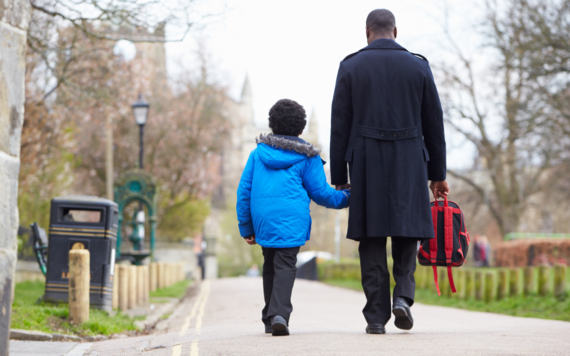 Why walk?
Nine per cent of borough households don't have a car, compared to 19 per cent in the South East and 26 per cent in England*
About a quarter of the UK’s greenhouse gas emissions come from transport, and in 2017 more than 90 per cent of total domestic transport greenhouse gas emissions were from road transport. (Latest figures available)
Road transport is the single biggest contributor to poor air quality. The Committee on Climate Change has identified getting people to switch from cars to walking and cycling as an important step that individuals and households can take to reduce their carbon footprint and help meet UK and global climate goals.
Road congestion is a challenge for towns and cities across the country. While congestion is annoying and frustrating, it also has an economic cost associated with delays in moving goods and people around the country.
Pedestrians and cyclists take up far less space than cars, meaning it is possible to move a much greater number of people through a space if they choose to travel on foot or by bicycle, as you can see in the image below which shows the same number of people in each image and how much road space they take up.
(Image taken in Australia but concept remains the same globally.)
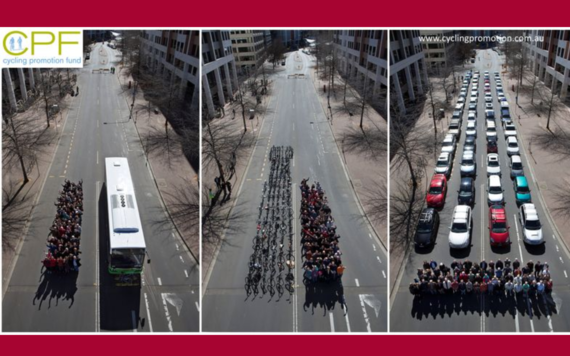
In England just over a quarter of all journeys are made on foot. Most of these are less than a mile and account for only three per cent of the distance travelled. The vast majority of journeys over a mile are made in a car or van, with 60 per cent of people travelling one to two miles using a motor vehicle.**
Walking is simple, free and a good way to get more active, lose weight and become healthier.
Sometimes overlooked as a form of exercise, walking briskly can help you build stamina, burn excess calories and make your heart healthier.
Before you start***
Any shoes or trainers that are comfortable, provide adequate support and do not cause blisters will do.
If you're walking to work, you could wear your usual work clothes with a comfy pair of shoes and change shoes when you get into work.
For long walks, you may want to take some water, healthy snacks, a spare top, sunscreen and a sun hat in a small backpack.
If you start going for longer walks regularly, you may want to invest in a waterproof jacket and some specialist walking shoes for more challenging routes.
What if you're not very active?
If you're not very active but are able to walk, increase your walking distance gradually.
If your joints are a problem, check whether your local swimming pool holds exercise classes.
The water helps to support your joints while you move and can help you strengthen your muscles.
 Walking to school
The average journey to primary school is 1.6 miles
Walking to school is a great way to start good habits early and brings some great health and wellbeing benefits:
- Children arrive at school more relaxed, alert and ready to start the day
- Children can learn about their local area and widen their social networks
- Walking to school can help reduce congestion and pollution - a quarter of cars on the road during morning peak traffic times are doing the school run
- Walking will help children's mental and physical health - it is predicted by 2060, 70 per cent of boys and 55 per cent of girls will be overweight.
Planning your route
My Journey Wokingham has taken all the pain out of planning your walking route to school.
For each school in the borough, you can download an active travel map, showing walking routes, pedestrian crossings, bus stops and more.
Preparing for walking alone
There is no minimum age for children to walk to school, it's a decision for you to take as a parent or carer. Starting walking with your child early can prepare them for being ready to walk on their own:
- Help them develop road awareness - bear in mind children perceive traffic in different ways to adults and can't always judge the speed or distance of vehicles
- Set an example: stop, look and listen, don't take risks and avoid using your mobile phone when crossing the road
- Bend down to their eye level to get an idea of what they can and can't see
- Find a safe place to cross where you can see easily, ideally at a crossing or away from parked cars and when it's clear, walk straight across
- Talk about the traffic you see on your way and the best places to cross, and ask questions about the speed and size of different vehicles
- In quiet areas, gradually allow your children to practice making decisions about where and when to cross the road
- Once you’re both confident, they could walk a little further ahead
- Practise the journey at the weekend when the roads are likely to be quieter
Where to find more information:
Sustrans
Living Streets
BRAKE
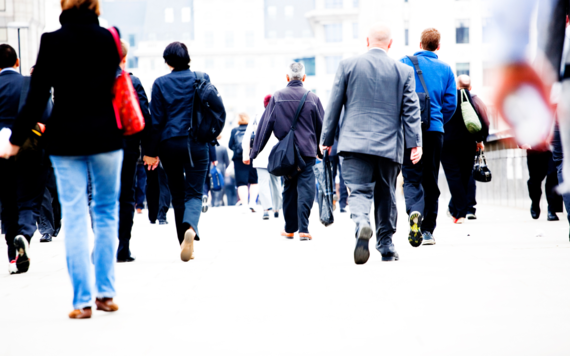 Walking to work
Two-thirds of Wokingham borough residents commute to work in a car, which is a major contributor to air pollution*.
In some parts of London, pollution levels fell by up to 50 per cent during the 2020 coronavirus lockdown**.
In our busy lives, we often consider exercise as something which is intense and requires a lot of effort. A brisk walk is considered as part of your 150 minutes of physical activity per week advised by the NHS to remain healthy.
The time you spend on walking needn’t be excessive either. Your daily exercise goals could be covered by three brisk 10 minute walks a day.
One excellent way that you can take part in this, is by walking to work. Depending on the distance you live from your workplace, it might not be possible for everyone to walk the entire journey to work. However as illustrated above, you do not need to walk for hours in order to benefit yourself.
There are a number of different ways you can involve walking in your daily commute. Some useful tips are listed below:
- If you take public transport, why not try and get off a stop early and walk the extra distance?
- Try walking to the bus stop or train station in the morning?
- If you drive, can you park further away?
There are proven benefits to exercise - both to your general health, and in your ability to concentrate. So why not try it for yourself this week?
* Office for National Statistics method of travel to work
** Environmental Defence Fund Europe and Global Action Plan study, 2020
 Walking for health, leisure and wellbeing
Walking is a great way to improve your physical health as well as your mental health and sense of wellbeing. Here are eight of Cancer Research UK's reasons to start walking:
- Reduces stress
- Maintains a healthy weight
- Discover new places
- Saves money
- Lower blood pressure
- Increase energy levels
- Improves sleep
- Saves the planet
Ramblers Wellbeing Walks
Did you know that there are a series of wellbeing walks across the borough each week, all run by volunteers from Ramblers?
The aim of the walks is to help improve health by walking briskly. There is a leader and a back marker so that everyone can walk at their own pace. All of the walks are graded from a short gentle stroll (20-30 minutes) to a three mile walk (about an hour). All walks are under 90 minutes.
It is a great way to meet new friends. The walkers are a very sociable bunch and often stop for a coffee and a chat at the end of a walk. There are also several social events throughout the year.
Walking groups
If you fancy going for a walk but don't want to go on your own, there are several walking groups in the borough.
My Journey Wokingham has started to compile a list. You can check out what is there and contact them if you have one you'd like to add.
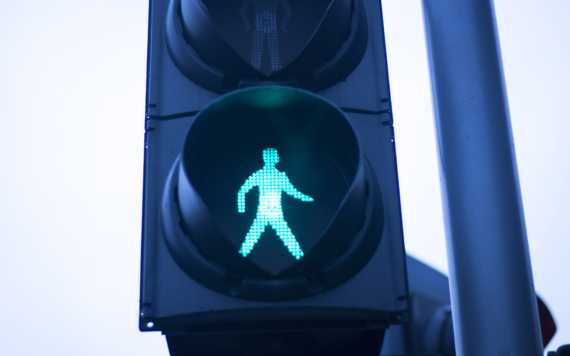 Finding a walk
Whether you want to walk for health, leisure or to carry out daily tasks, there is a wealth of information available about walking routes around the borough.
Walking Apps
There are quite a few apps out there to plan your walks and see which others have already tried some of which are listed below:
Visorando
Komoot
Walkit
You could also try using the free NHS Active 10 app on your smartphone, which tells you when you're walking fast enough and suggests ways to fit in some more brisk walking:
Innovation Valley rewards you for being active, the more you move, the more ValleyPoints you earn, which can be transferred into vouchers for high street shops, and until the end of October residents of the borough can earn extra points by signing up to challenges.
Local routes
My Journey Wokingham has lots of maps available for walks of different lengths across the borough, which you can find on their walking maps page.
They also have a round-up of walks that have been put together by town and parish councils and local volunteer groups, which you can find on their local walks page.
If you can't find a ready made route, then you can use their route maps to plan where you want to go.
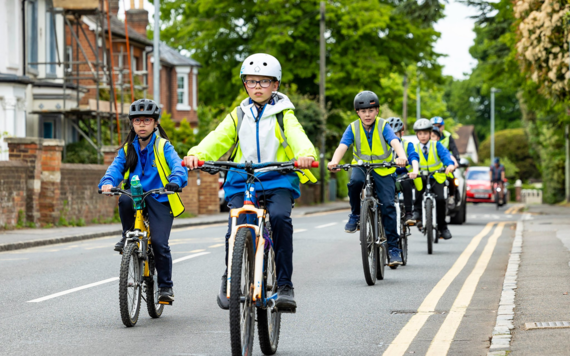 In case you missed it...
Pupils from Year 7 at the Piggott secondary school in Wargrave took part in a bike skills training workshop to make up for an opportunity they missed during coronavirus restrictions. This was organised by our My Journey Wokingham team, which promotes active and sustainable travel across the borough.
|